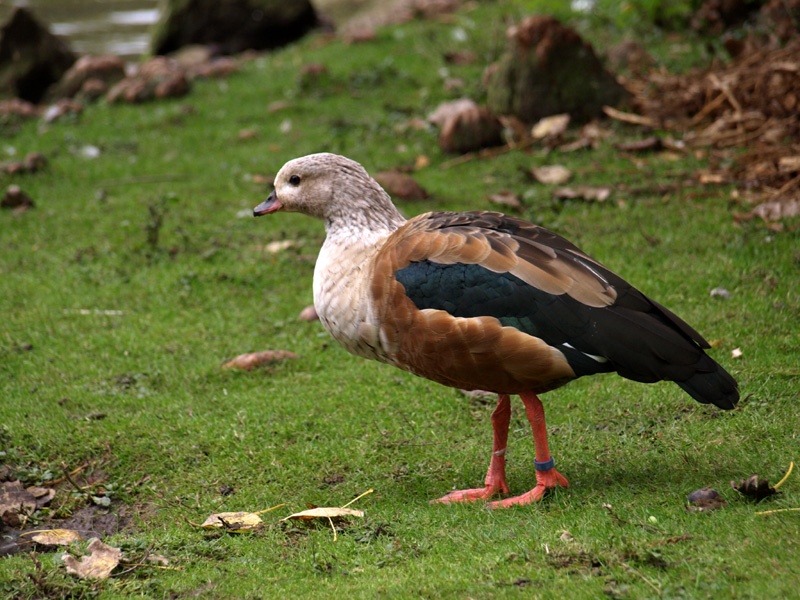
Orinoco goose(Neochen jubata)
Phylum —chordata
Class — aves
Order — anseriformes
Family — anatidae
Genus – neochen
Appearance
Orinoco geese are 61 to 76 cm (24 to 30 in) long. It has a pale head and neck, chestnut flanks and mantle and blackish wings with a white speculum. The legs are red and the bill is black and pinkish. The sexes of this striking species are identical in plumage, though the males are larger; juveniles have duller plumage than adults.
Habitat
These birds are endemic to South America and found along the Orinoco and Amazon basins from eastern Colombia and Venezuela, to eastern Bolivia and central Brazil; and in western Paraguay and northern Argentina. They inhabit forest covered banks, wet savannas, muddy and sandy shores of freshwater wetlands.
Behavior
This is a largely terrestrial species, which will also perch readily in trees. It rarely swims or flies unless hard pressed. In flight it looks heavy, more like a goose than a duck, hence the English name.
The Orinoco goose is a very territorial species in the breeding season, and usually nests in hollow trees, only occasionally on the ground.
Diet
Orinoco geese feed primarily by grazing on the savannah lands adjacent to the rivers by which they nest. They will also eat aquatic plants, herbs and insects.
Reproduction
During breeding time, the pair will roost in a tree cavity that has been lined with down. The female will lay 6-15 pale brownish-cream eggs that are incubated for about 30 days. The male stays close to the nest during this time.
In captivity
Lifespan in captivity is 25 years.
When keeping this species, it is necessary to have a pool with water or a natural reservoir. The optimal ratio of the reservoir area to pasture is 20% water and 80% pasture. The optimal area of the entire enclosure is 200 sq. m. The optimal height of grass in the pasture is 7.5 cm.
Geese eat natural grasses. You can add to herbs: wheat grains, waterfowl pellets, and chicken feed. If there is not enough grass on the pasture, it is necessary to bring mown fresh grass. In winter, you can feed sliced vegetables, especially good to give cabbage and salads. Not averse to eating worms, insects and shellfish sometimes.
For artificial nesting, a hollow tree is best suited. It may be an old stump with the core cut out. The size of the hollow is 50x40x40cm. The entrance hole should be placed at ground level. It is better to cover the inside of the hollow with straw or dry grass.
On the territory of the aviary, you need to build a wooden box, insulated from the inside with straw. In this booth, geese will be able to hide from the cold and wind in the cold season.
 Russian
Russian
 English
English
























